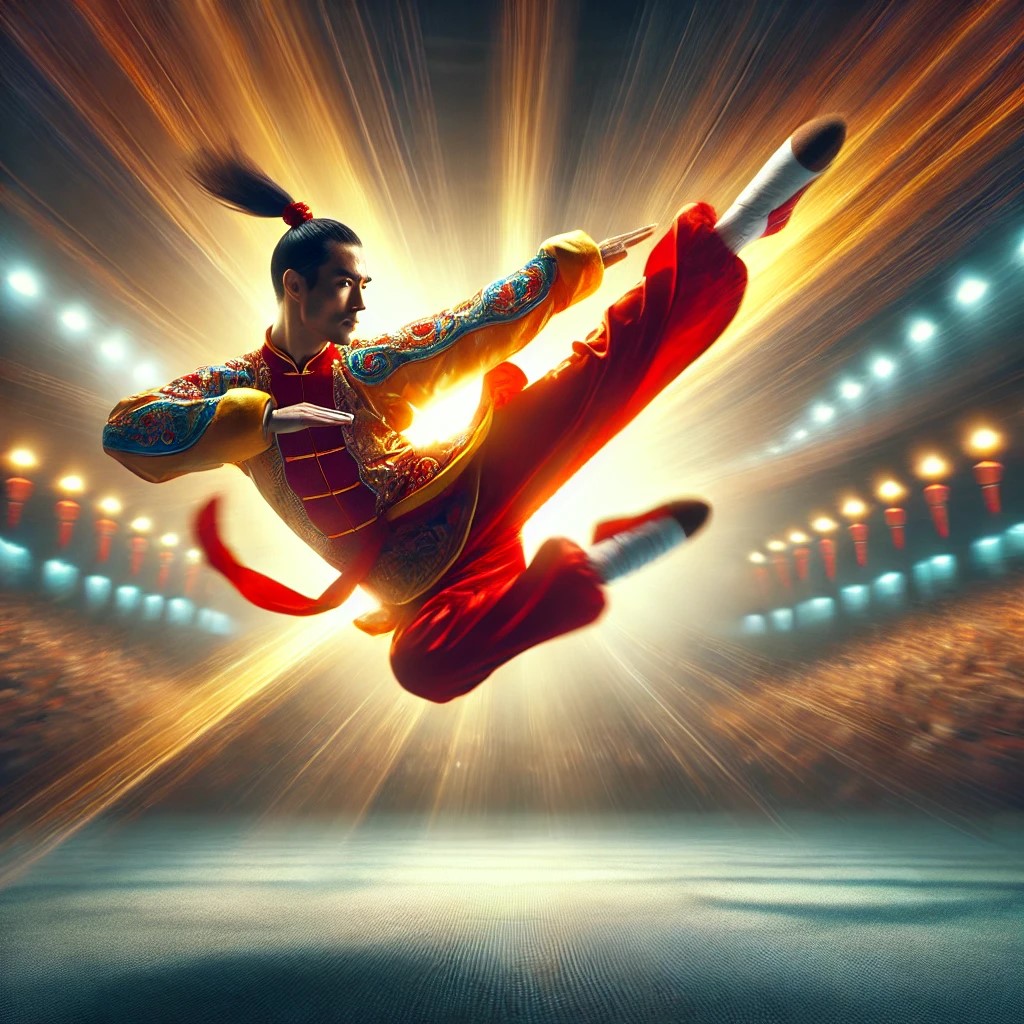
Exploring the World of Wushu: Origins, Global Popularity, and Its Intricacies
Wushu, a captivating martial art and competitive sport, has a rich heritage steeped in Chinese history. It offers a blend of physical mastery, cultural expression, and artistic performance. The discipline’s growing prominence globally has introduced it to schools, youth programs, and professional leagues. It also holds political and social significance, reflecting the cultural pride of its origins. Let us delve into the fascinating world of Wushu, its history, global reach, amateur development, professional leagues, and rules.
The Origins and History
Wushu originated in ancient China, where martial arts were developed for self-defense, military training, and spiritual practices. The term “Wushu” translates to “martial arts” in Mandarin. Its roots trace back to the Xia, Shang, and Zhou dynasties (circa 21st century BCE to 256 BCE), when rudimentary forms of combat training were practiced. Over time, these techniques evolved into structured systems.
During the Han Dynasty (202 BCE–200 CE), martial arts became integral to military training and popularized in civilian life. The Tang and Song dynasties (618–1279 CE) witnessed significant developments, with martial arts performances becoming cultural staples. The Ming and Qing dynasties (1368–1911 CE) saw the emergence of formal schools that codified styles and techniques. By the 20th century, traditional martial arts adapted to modern times, culminating in the establishment of contemporary Wushu.
The People’s Republic of China recognized Wushu as a national sport in the 1950s. Efforts to modernize and systematize it led to the creation of competitive formats. The International Wushu Federation (IWUF), founded in 1990, standardized rules and facilitated its global expansion.
The Global Popularity
Today, Wushu enjoys widespread recognition, with millions of practitioners across continents. The IWUF promotes the sport in over 150 member countries. Its inclusion in events like the World Games, Asian Games, and Universiade has amplified its global appeal.
China remains Wushu’s epicenter, with thousands of schools and academies dedicated to training. In Asia, countries like Japan, Korea, and Vietnam boast vibrant Wushu communities. Europe has embraced it through organizations and competitions, particularly in Russia, France, and Italy. North America, led by the United States and Canada, has seen growth in youth programs and collegiate leagues.
The sport’s appeal lies in its combination of physical agility, artistic expression, and cultural heritage. It bridges traditional and contemporary practices, making it accessible to diverse audiences worldwide. Events like the World Wushu Championships showcase international talent, further cementing its global stature.
Amateur Wushu: Youth and Schools
Amateur Wushu thrives in schools, community centers, and youth programs. It emphasizes discipline, physical fitness, and cultural appreciation, making it an excellent activity for young learners. Training begins with foundational movements, stances, and breathing techniques. As students progress, they explore forms (taolu) and sparring (sanda).
Schools and clubs worldwide offer structured curricula, often tailored to different age groups and skill levels. Youth tournaments provide platforms for young athletes to demonstrate their abilities. The sport’s integration into school curriculums in China has inspired similar initiatives abroad. This has cultivated a new generation of practitioners, ensuring the sport’s longevity.
Organizations like the United States Wushu Academy and the European Wushu Federation play vital roles in promoting amateur participation. These institutions host workshops, competitions, and certification programs, fostering community engagement. The sport’s emphasis on respect, discipline, and perseverance resonates with parents and educators alike.
Professional Wushu Leagues
Professional Wushu showcases elite athletes performing at the highest levels. Competitive leagues and events attract global audiences, blending athleticism with spectacle. Key organizations like the IWUF and regional federations oversee professional competitions.
The World Wushu Championships, held biennially, serve as the pinnacle of the sport. Athletes compete in various categories, including taolu (forms) and sanda (sparring). The Asian Games and National Wushu Championships in China also feature high-level competition, drawing immense viewership.
Professional leagues emphasize rigorous training, often supported by government and private sponsorship. Athletes undergo intensive preparation, mastering intricate techniques and choreography. Their performances not only entertain but also inspire future generations.
The commercialization of Wushu has led to the emergence of endorsement deals, media coverage, and global fanbases. Countries like Malaysia, Singapore, and the Philippines have established professional circuits, reflecting the sport’s expanding reach.
Political and Social Significance
Wushu holds profound political and social significance, particularly in its country of origin. In China, it symbolizes cultural heritage and national identity. Government initiatives promote Wushu as a soft power tool, fostering cultural diplomacy.
The sport serves as a bridge between tradition and modernity, showcasing China’s historical richness while adapting to contemporary trends. Events like the Beijing Wushu Culture Week celebrate this duality, attracting international participants and audiences.
Socially, Wushu fosters community and inclusivity. It transcends barriers of age, gender, and nationality, promoting unity and understanding. Programs aimed at disadvantaged communities provide opportunities for skill development and personal growth.
Wushu’s influence extends beyond China. Its presence in international events fosters cross-cultural exchange, enhancing global appreciation of Chinese culture. As a unifying force, Wushu contributes to international cooperation and friendship.
Rules and Structure of Wushu
Wushu competitions are governed by standardized rules, ensuring fairness and consistency. Events are broadly categorized into taolu (forms) and sanda (sparring).
Taolu involves performing choreographed routines that showcase strength, flexibility, and precision. Judges evaluate based on technical difficulty, execution, and artistic presentation. Weapons forms add another layer of complexity, requiring skillful handling of traditional implements like swords, spears, and staffs.
Sanda, or Chinese kickboxing, is a combat discipline combining punches, kicks, and throws. Matches are contested in a ring, with points awarded for clean strikes and takedowns. Protective gear ensures athlete safety, and bouts are monitored by referees and medical personnel.
Competitions follow a structured format, with preliminary rounds leading to finals. Athletes compete within specific weight classes (for sanda) and age divisions. The IWUF’s rulebook outlines scoring criteria, prohibited actions, and other regulations.
Training for Wushu involves rigorous physical conditioning and mental focus. Athletes must master fundamentals like stances, transitions, and balance. Advanced techniques require years of practice, underscoring the dedication demanded by the sport.
Conclusion
Wushu stands as a testament to the enduring legacy of martial arts and cultural expression. Its historical roots, global popularity, and intricate practices make it a unique and fascinating discipline. From amateur programs nurturing young talent to professional leagues showcasing elite performances, Wushu continues to captivate audiences worldwide.
As a symbol of tradition and innovation, Wushu bridges cultures and generations, inspiring countless individuals. Whether practiced for sport, art, or personal growth, it embodies the spirit of perseverance and unity. Through ongoing promotion and development, Wushu’s future remains as dynamic and vibrant as its past.




